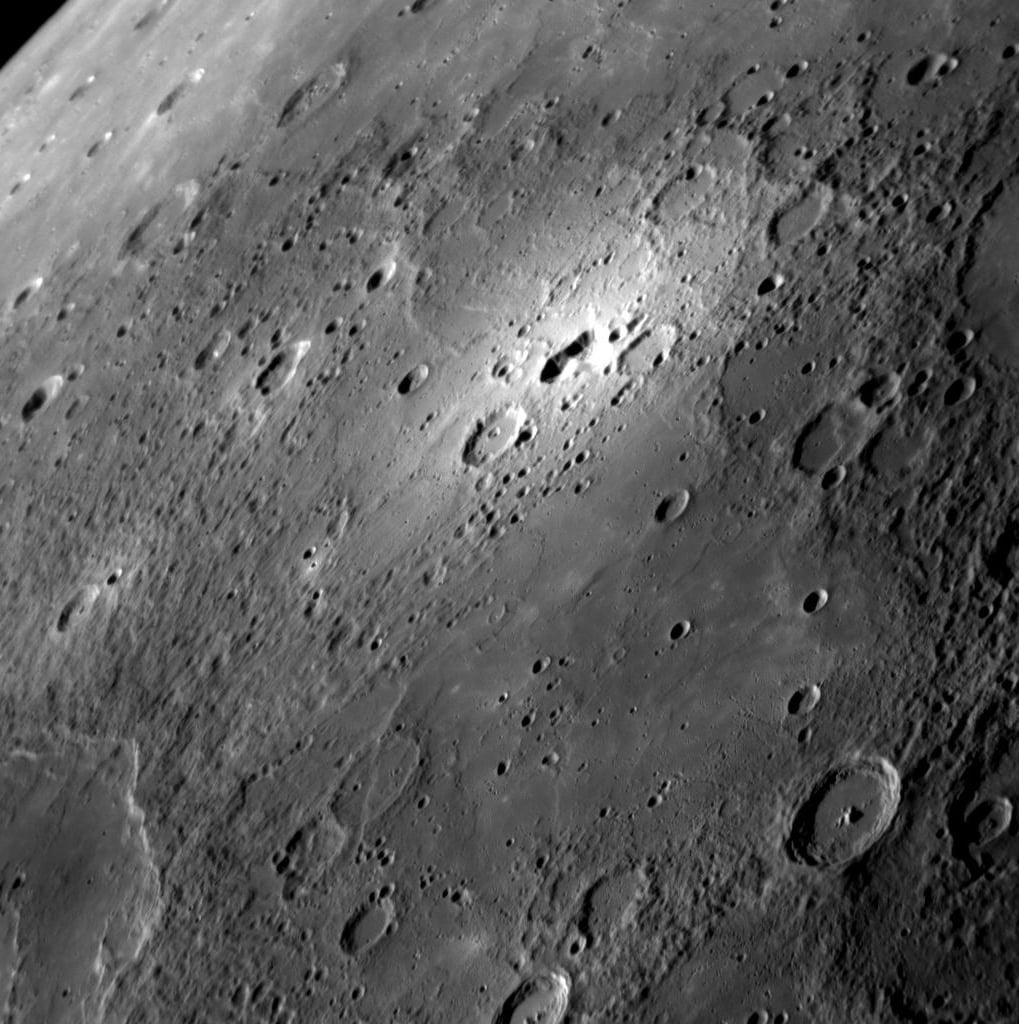[/caption]More new images were released today from the MESSENGER spacecraft's third flyby of Mercury. I asked astrophysicist
Dr. Jeff Goldstein
(
doctorjeff
on Twitter), (who was on hand at the mission operations center to
blog
and Tweet about the flyby) which image the science team found most intriguing, and he replied that it was really hard to tell, as they were oohing and aahing at every image! But one of the most interesting was this shot of a bright spot on the planet closest to the sun. MESSENGER's Narrow Angle Camera also saw this spot during the spacecraft's second Mercury flyby on October 6, 2008, but the bright feature was just on the planet's limb (edge) from the spacecraft's vantage point. This time, however, the geometry of MESSENGER's flyby provided a better look at this feature. Surprisingly, at the center of the bright halo is an irregular depression, which may have formed through volcanic processes. Color images from MESSENGER's Wide Angle Camera reveal that the irregular depression and bright halo have distinctive color. This area will be of particular interest for further observation during MESSENGER's orbital operations starting in 2011.
[caption id="attachment_41950" align="aligncenter" width="580" caption="Craters form a paw print on Mercury. Credit: NASA/Johns Hopkins University Applied Physics Laboratory/Carnegie Institution of Washington"]
[/caption] If you like seeing a little pareidolia, here's a fun one: a paw print! Mercury's surface is covered with craters in many sizes and arrangements, the result of impacts that have occurred over billions of years. In the top center of the image, outlined in a white box and shown in the enlargement at upper right, is a cluster of impact craters on Mercury that appears coincidentally to resemble a giant paw print. In the "heel" are overlapping craters, made by a series of impacts occurring on top of each other over time. The four "toes" are single craters arranged in an arc northward of the "heel." The "toes" don't overlap so it isn't possible to tell their ages relative to each other. The newly identified pit-floor crater can be seen in the center of the main image as the crater containing a depression shaped like a backward and upside-down comma.
For more of the latest images from the third flyby,
check out the MESSENGER flyby page.
 Universe Today
Universe Today
